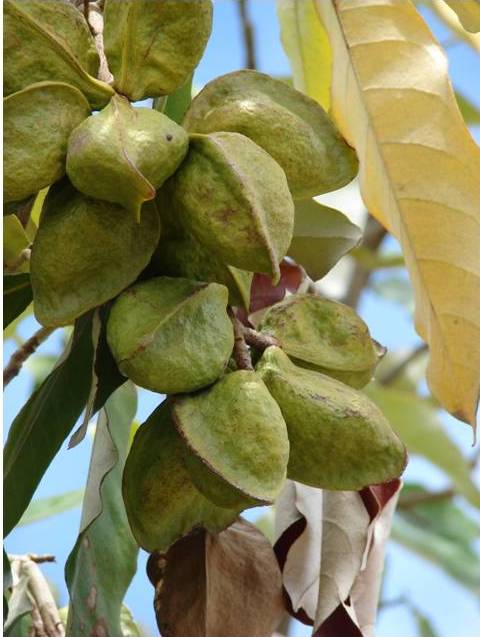Looking-Glass Mangrove, Heritiera littoralis
Local Name: Kedra ivi na yalewa kalou.
Description:
• Grows up to 8m in height, though in some foreign countries it is noted to reach 25m.
• Leaves are a pointed oval shape that can be 25cm long and 15cm in breadth with silvery scales on the underside, which therefore appear green from top and white from below
• Flowers are a light green in colour.
• Fruits are greenish-brown with a shiny texture. There is a stiff keel/ridge along one side.
Flowering and Fruiting: usually flowers through January to July and bears fruit throughout the year.
Uses: The hard and strong timber is valued for masts, when it can be got straight enough. It is also used for canoes, firewood, house posts, joists, pressers, telegraph poles, wheel-hubs and boat-ribs. An extract of the seed can be used to treat diarrhoea and dysentery.
Habitat: occurs in coastal forests and mangrove swamps.
Distribution: this species is locally abundant. It ranges from Eastern Africa through Australia and the Pacific as far as Tonga, Cook Islands and Society Islands. It is also said to be introduced in Hawaii.

